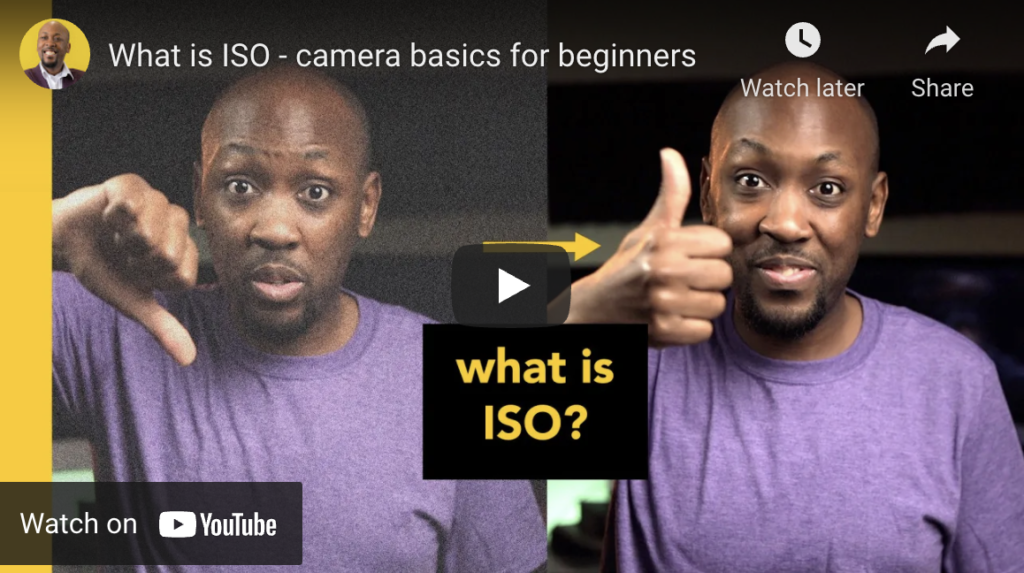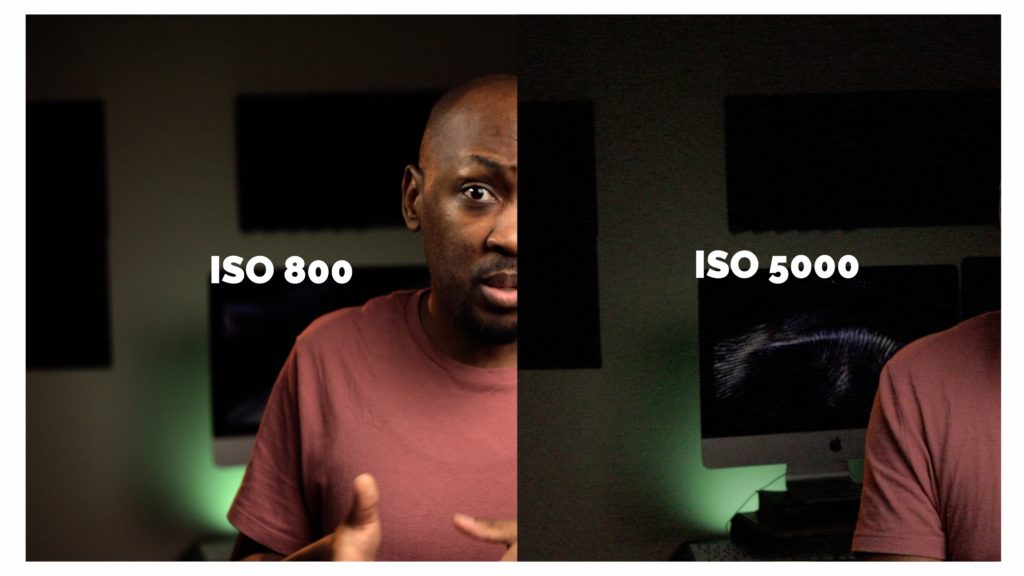What is the ISO camera setting?
As you learn to use your DSLR or mirrorless camera, you’re going to see this thing in your settings called ISO. Don’t worry; it’s not an acronym that means anything for your photography knowledge.
ISO is the third member of the exposure triangle, along with shutter speed and aperture. It’s a very simple concept so this week’s video is much shorter. Check it out!

THE SIMPLE FACTS ABOUT ISO
Higher ISO numbers make your image brighter. Lower ISO numbers make your sensor less sensitive to light and thus make your image darker.
The downside of too much ISO is graininess in your shots. This graininess is most commonly called noise. Yes, a visual attribute of your photos and videos is called noise. Go figure. It’s also called grain or graininess.
Another side effect of using too much ISO is the loss of vibrancy in your shots. Colours are not so rich at higher ISOs.
These side effects are due to the fact that after a certain point, the ISO introduces artificial brightness or “fake light” to make your shots brighter.

With all that being said, the rule of thumb is to use the lowest possible ISO setting as you try to expose your image properly! Try to set your aperture and shutter speed optimally for light and your desired effects THEN set your ISO. This rule of thumb presupposes, of course, that you want clean and crispy images.
If you skimp on the ISO because you’re afraid of noisy shots and end up having to raise the brightness in the edit, this is essentially the same thing as using that higher ISO you were trying to avoid… except now your computer is guessing what things should look like instead of working with the info that’s already there.
If you’re finding that you’re cranking your ISO pretty high and the image is not getting bright enough, consider these 2 things:
- Use the other settings – aperture and shutter speed – to get more light without compromising your stylistic outcome.
- Consider getting more light. This could mean using a flash, continuous lighting, or just shooting in a place OR time with more available light.
Every camera handles image noise differently and gets to “unusable” ranges of noise at different settings. As you continue to shoot, you’ll get to know what that is for your specific camera with experience.
And that’s all you really need to know about ISO in these beginning stages. Learn how it works hand-in-hand with shutter speed and aperture for the best understanding of exposure.
Stay courageous, friends!